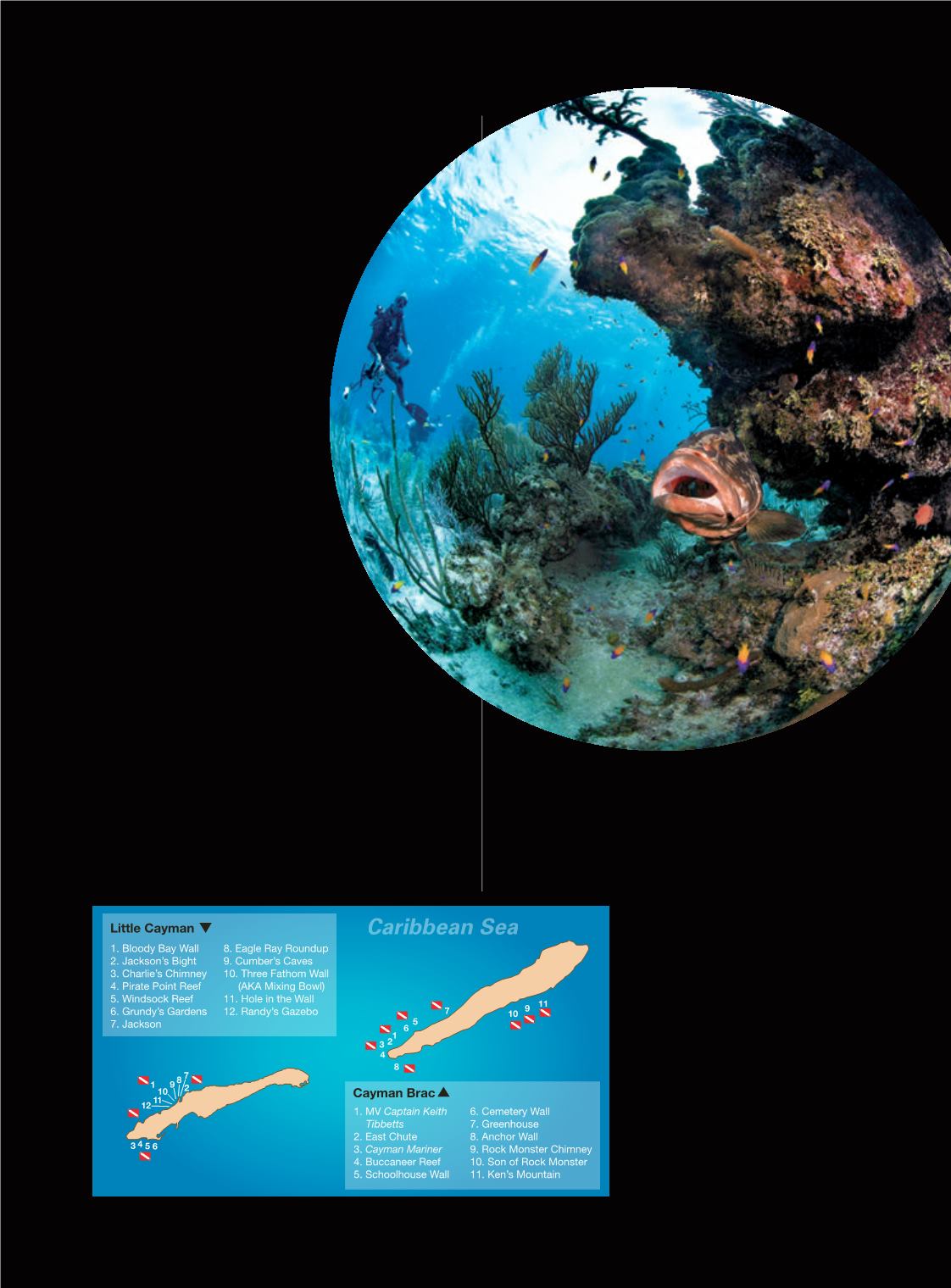
 ALERTDIVER.COM
ALERTDIVER.COM
|
87
How to Dive It
GETTING THERE:
The Cayman Islands, Grand
Cayman in particular, are among the Caribbean’s
most easily accessed destinations, with direct
flights from numerous carriers, including the
nation’s flag carrier, Cayman Airways, which
arrives daily at Owen Roberts International
Airport. The Sister Islands present a bit
more of a challenge, as they require
connecting flights. Cayman Brac’s
Charles Kirkconnell International Airport
has a 6,000-foot runway that can
accommodate a Cayman Airways 737
(as well as a de Havilland DHC Twin
Otter operated by Cayman Airways
Express out of Grand Cayman. Little
Cayman’s 3,200-foot grass and
gravel runway is too small for the jet,
but the Twin Otter lands there several
times a day.
When traveling to Cayman Brac or
Little Cayman via the Twin Otter service,
the baggage allowance is 55 pounds per
person (combined weight of up to two
pieces) and one 15-pound carry-on. Excess
is charged at US$0.50 per pound. I have found
the airline to be more lenient on incoming flights
because they understand that passengers typically
connect from larger aircraft. On the outgoing leg back to
Grand Cayman, however, they tend to adhere to the letter
of their law. The baggage restrictions on the 737 to Cayman
Brac are no more stringent than normal international flights. On
Cayman Air, for example, the allowance is two free checked bags
of up to 55 pounds each and a carry-on of up to 40 pounds.
CONDITIONS:
The water temperature is usually 81°F-85°F
year round, so a 3 mm wetsuit is perfect. Air temperatures are
balmy (75°F-88°F) with the occasional cold snap dropping it
below 60°F. Visibility in the Sister Islands ranges from good to
outstanding — 60-150 feet unless there is a strong, consistent
wind. When the north wind picks up, the waves can batter
the ironshore and stir up sediment on the shallow hardpan
seafloor, creating turbidity. The good news is that this leaves the
southern dive sites with good visibility. It takes a heavy tropical
disturbance to cause days of lost diving in the Sister Islands,
but with hurricanes, obviously that does happen. Some pretty
heavy tropical systems have lashed the
Sister Islands over the years, but they
are well predicted, and travelers will
generally know about significant weather
in advance.
Dive operations prefer that recreational
scuba be kept to 100 feet and shallower,
but there is a lot of technical diving done
in the Cayman Island to considerable
depth. Currents aren’t often an issue,
and most diving is done in reasonably
calm conditions. The dive operations are
professional and safe, and most operate
large and seaworthy boats. There is
a hyperbaric chamber in Georgetown,
Grand Cayman.


















